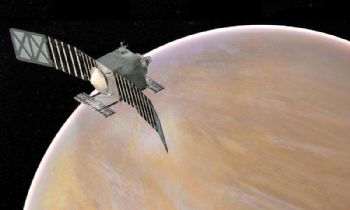
NASA (
www.nasa.gov) has selected two concepts for a robotic mission planned to launch in the mid-2020s: a comet sample return mission; and a drone-like rotorcraft that would explore potential landing sites on Saturn’s largest moon, Titan.
The concepts were chosen from 12 proposals submitted in April last year under a New Frontiers programme ‘announcement of opportunity’.
Thomas Zurbuchen, associate administrator for NASA’s Science Mission Directorate in Washington, said: “This is a giant leap forward in developing our next bold mission of science discovery. These are tantalising investigations that seek to answer some of the biggest questions in our solar system today.”
The first finalist is Comet Astrobiology Exploration Sample Return (CAESAR), which seeks to return a sample from 67P/Churyumov-Gerasimenko — a comet that was successfully explored by the European Space Agency’s Rosetta spacecraft — to determine its origin and history.
Led by Steve Squyres of Cornell University in Ithaca, New York, CAESAR would be managed by NASA’s Goddard Space Flight Center in Greenbelt, Maryland.
The second is Dragonfly, a drone-like rotorcraft that would explore the prebiotic chemistry and habitability of dozens of sites on Saturn’s moon Titan. Elizabeth Turtle from the Johns Hopkins University Applied Physics Laboratory (APL) in Laurel, Maryland, is the lead investigator, with APL providing project management.
The CAESAR and Dragonfly missions will receive funding through to the end of 2018 to further develop their concepts.
NASA plans to select one of these investigations in the spring of 2019 to continue on to subsequent mission phases.
The selected mission will be the fourth in NASA’s New Frontiers portfolio, a series of principal investigator-led planetary science investigations that fall under a development cost cap of about $850 million.
Its predecessors are the New Horizons mission to Pluto and a Kuiper Belt object known as 2014 MU69, the Juno mission to Jupiter, and OSIRIS-REx, which will rendezvous with — and return a sample of — the asteroid Bennu.